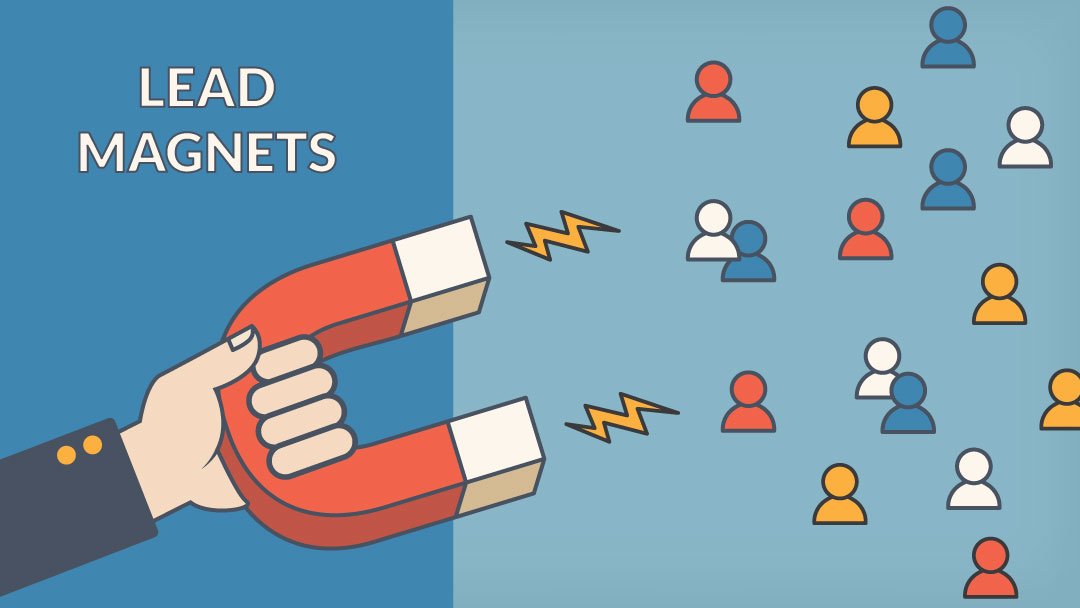It is no secret that lead generation marketing is one of the best strategies for increasing sales and conversions. In addition to that, there is an integral part of this crucial process. That’s none other than the lead magnet. Failure to understand it has seen many business owners incur a lot of loss running marketing campaigns that never bear any fruits. I am almost sure that you don’t want to find yourself in such a situation. That’s why this article is a must-read. After all, it leaves no stone unturned as far as lead magnets are concerned. Without much ado, let’s discuss as much as possible about lead magnets. Our highlights include;
- What is a lead magnet?
- How to create a good lead magnet
- Examples of lead magnets
- Factors that determine the effectiveness of a lead magnet
- The role of a lead magnet in a lead generation campaign.
So, let’s get started right away.
What is a lead magnet?
A magnet is something known for attracting certain metals. That should give you a rough idea of what a lead magnet is. In marketing, a lead is any potential customer. Consequently, a lead magnet is any strategy or offer that compels a visitor to your website to share their contact information. It could be an email address, phone number, or any other means that the marketing team can reach out to the potential customer. Without the contact information, it could be hard to reach out to a potential customer to try and owe them into becoming an actual customer.
So, based on the description, a lead magnet can be many things. It could be a newsletter, ebook, whitepaper, or any other content that creates your brand awareness. The content also persuades the website visitor to engage or instills interest in buying your products or services. Commonly used lead magnets include a demo, trial subscription, and free samples, to mention a few.
How to create a good lead magnet
When it comes to lead magnets, your company must persuade potential customers to exchange their contacts. It is no secret that that’s usually hard to do. Fortunately, with the right lead magnet, it becomes a breeze. How do you ensure that you create a good lead magnet, though? Here are some important tips that can assist you in that.
1. Create your buyer’s persona
Regardless of the lead magnet, you choose to apply to, building your buyer’s persona is mandatory. It helps you understand perfectly the person you are selling your products or services to. Don’t confuse a buyer’s persona target audience. After all, the latter is more general than the former. If you want to get it right when creating a lead magnet, you have to be more specific. That’s where the buyer’s persona comes in. As you define it, consider goals, demands, motivations, behavior patterns, jobs, social status, gender, and age. Remember that generalizing the persona won’t do your marketing campaign any good.
2. Define Your Offer’s Value
It will involve you putting yourself in the shoes of your potential customer. After that, ask yourself whether you would find your offer valuable if you were the client. When determining the ideal value proposition for your leads, you will have to consider two aspects. The first is the buyer’s persona, while the other is how the buyer benefits from your product or service.
3. Competitors’ Analysis
Don’t make the mistake of copying what your competitors are offering potential customers. Nevertheless, don’t turn a blind eye to them either. On the contrary, draw inspiration from them to ensure that your products, services, and offers are better than what they give.
4. Select the Ideal Type of Lead Magnet
Once you get the first three things right, rest assured that this will be a breeze. There are various types of lead markets to choose from, no doubt. For instance, your choices include sales materials, special offers, discounts, video tutorials, or cheatsheets. Quizzes, mini-games, questionnaires, polls, resource lists, demos, free trials, guides, and reports are also options. Ensure that what you choose represents your audience’s persona and offers value perfectly. In addition to that, it should help you stand out from your competitors.
Factors that determine the effectiveness of a lead magnet
If you want a lead magnet that yields results, there are things that you need to consider. They include;
1. Relevance
Once you identify your target audience, ensure that your lead magnet resonates perfectly with that group. Otherwise, a great offer will be useless if no potential customer sees its relevance and value.
2. Value
Remember that you want your potential customer to share their contact information. However, that’s the last thing that most people want. It is most likely due to having people often misuse that privilege along the way. So, no one wants to give out that information unless it is absolutely necessary. That’s why you need to ensure that the value of your offer makes it convincing enough for someone to share their contact details.
3. Their Importance to the Business
It is no secret that you are doing all the lead generation and creating lead magnets to make the business successful. So, your lead magnet will only be effective if it serves that purpose. At the end of the day, it will only benefit you if it helps your business.
Final Words: A Lead Magnet
It turns out that a lead magnet is an integral part of a lead generation marketing campaign. After all, it plays a significant role in determining whether the campaign will be successful or not. Besides that, one shouldn’t just choose lead magnets for its sake. It needs to have several characteristics, or it will be another waste of time and money. These features include relevance to the potential customer and its value for both parties. Otherwise, all the efforts will go down the drain. If you want to create an effective lead magnet, don’t forget to practice the tips described above. Alternatively, look for a lead generation agency such as LeadChimp for the best results that you are looking for.











Recent Comments